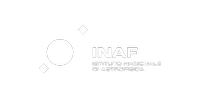AtLAST2 - Consolidating plans for the Atacama Large Aperture Submillimeter Telescope
Abstract: The landscape of future ground-based European astronomical research infrastructures expected to start in the 2030s is broad and diverse, ranging from low-frequency radio (SKAO), to the optical (ELT, EST), all the way to cosmic rays (CTAO) and gravitational waves (Einstein Telescope). There are two glaring omissions, however. The first is a sensitive, high resolution next-generation facility operating at (sub-)millimeter wavelengths (0.35-10 mm), a crucial observing window for the study of a broad range of astrophysical objects, from our Solar System to the Milky Way, nearby galaxies, and the distant universe. The second is that currently planned facilities are not truly prepared to operate in a low carbon emissions future, meeting the needs of the research community and the aspirations of the EU for carbon-neutrality. This project, consolidating the plans for the 50-meter Atacama Large Aperture Submillimeter Telescope (AtLAST), directly addresses both needs, providing solutions that will inform other observatories along the way, especially our partners ESFRI landmark (ESO-ELT) and project (EST). Our ambition is to harness European knowhow and cooperate on a global scale to revolutionise our understanding of the (sub-)mm universe, while pushing observational astronomy towards a greener future. Strengthened by a H2020-funded design study and an engaged community of about 200 researchers worldwide, we have produced science cases, telescope conceptual designs, and plans for a sustainable, off-grid power system. We are now ready to consolidate the AtLAST concept, prototype and test our technology solutions, perform a full lifecycle assessment of the facility, and to expand our user community. By the end of this project, AtLAST will have increased the technology readiness level of its crucial components and undergone preliminary design review, ready to move the project to its implementation phase.
 AtLAST2 has received funding from the European Union's Horizon Europe research and innovation programme under grant agreement No 101188037.
AtLAST2 has received funding from the European Union's Horizon Europe research and innovation programme under grant agreement No 101188037.
Dettagli tecnici
PI INAF: Sergio Poppi
Struttura INAF: OA Cagliari
Bando: HORIZON-INFRA-2024-DEV-01-03
Riferimento contratto n. 101188037
Inizio: 01/01/2025
Durata: 42 mesi
Coordinamento: UiO (NO)
Partners
|
ESO (DE) |
OHB DC (DE) |
IAC (ES) |
UKRI (UK) |
|
MPIfR (DE) |
UCM (ES) |
UCologne (DE) |
UPretoria (ZA) |
|
UCardiff (UK) |
TU Delft (NL) |
CSIC ICE (ES) |
Chalmers (SE) |
|
EST (ES) |
|
|
|

